Physics

You have decided to start a graduate study in physics. Where should you apply? And how to decide which offer to take?
A diarrhea of lists attempt to rank "the world’s best universities". Mostly these lists are based on some aggregate of different metrics. Yet, for a postgraduate degree your focus should be on one and only one metric: you want to surround yourself with the best brains. If you're good, the place to hone your skills is there where you get the opportunity to learn from the best. There where you can join those that are making impact in their field of research.
What are the high-…
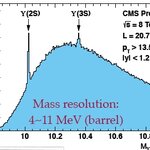
Do you remember the X(3872) ? This is a hadron containing charm and anticharm quarks, which was observed to decay into a J/Psi meson, a positive, and a negative pion. When it was discovered, by the Belle experiment in 2003, the X caused a lot of interest among spectroscopists, because it is an "exotic" charmonium state: its nature is not totally clear, as it might be interpreted as a "molecule" of two charmed mesons loosely bound together. Or maybe a four-quark system ? Or just conventional charmonium, a bit at odds with the expected set of spin-parity states but otherwise just a honest meson…

Researchers have used an atomic clock as a quantum simulator, mimicking the behavior of a different, more complex quantum system, joining a growing list of physical systems that can be used for modeling and perhaps eventually explaining the quantum mechanical behavior of exotic materials such as high-temperature superconductors, which conduct electricity without resistance.
All but the smallest, most trivial quantum systems are too complicated to simulate on classical computers, hence the interest in quantum simulators. Sharing some of the features of experimental quantum computers—a hot…
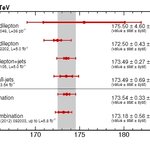
In the past few weeks the Tevatron and LHC experiments have updated their results on some of the most important Standard Model parameters. Of these, notably the top quark mass is one where the Tevatron is still doing slightly better than the LHC, due to the longer running time of the CDF and DZERO experiments, which allowed for a more precise calibration of the jet energy scale - the largest systematic uncertainty in this kind of business.
I have updated you on the matter tangentially in the previous two posts, where I discussed the overall compatibility of top and W boson masses with the…

For quantum physicists working on future systems, entangling quantum systems is a key resource for upcoming quantum computers and simulators.
Physicists have crafted a new, reliable method to verify entanglement in the laboratory using a minimal number of assumptions about the system and measuring devices - it witnesses the presence of useful entanglement, a ‘verification without knowledge’.
Quantum computation, quantum communication and quantum cryptography often require entanglement. For many of these upcoming quantum technologies, entanglement – this hard to grasp, counter-intuitive…
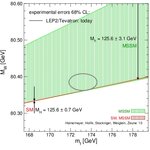
Two days ago I showed how the measurements produced in the course of the last decade have allowed us to "zoom into" the parameter space of the Standard Model, pinpointing the W boson, top quark, and Higgs boson masses to a very narrow 3-D volume of phase space.
That volume intersecates the plane which corresponds to the Standard Model prediction: the Standard Model does not predict the mass of the three heaviest particles any more than it predicts the mass of the lightest ones, but its inner workings (so-called "radiative corrections" due to quantum loop processes involving the top, the W,…
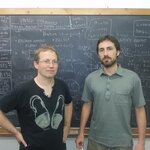
The Standard Model has some gaps and is unable to explain phenomena like dark matter or gravitational interaction between particles. Some physicists are seeking what they call "New Physics", something more fundamental, but there has been no direct proof of its existence, only indirect observation of dark matter, as deduced, among other things, from the movement of the galaxies.
A team of physicists from the Universitat Autònoma de Barcelona and the French CNRS have predicted deviations in the probability of one of the B meson decays that have been detected experimentally in the LHC…
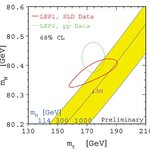
The CDF and DZERO experiments recently produced a combination of their precision measurements of the W boson mass, and proceeded to include the LEP II results to obtain a "world average" of that very important parameter of the Standard Model.
The measurement is described in detail in a paper which explains the combination procedure (not trivial, since there are a number of systematic uncertainties that are partly correlated between the experiments). The Tevatron inputs are as follows:
CDF Run I (107/pb, 1.8 TeV): M_W = 80432+-79 MeVCDF Run II (2.2/fb, 1.96 TeV): M_W = 80387+-19 MeVDZERO Run I…

Today I received news of an interesting measurement of angular distributions of the decay products in the rare decay of the B meson to a K* and a muon pair - one of the specialties of the LHCb collaboration, which has more horse-power in some of these low-energy measurements than ATLAS and CMS.
As I described in the two previous posts, (where I discussed the recent measurements of the Bs->μμ decay and the Bd one) when you look at rare decays of heavy mesons which occur within the Standard Model thanks to quantum loops of virtual particles, you get sensitive to possible new physics…

Since 1935, when Austrian physicist Erwin Schrödinger created his famous thought experiment about a cat that was both alive and dead, physicists have tried to create large scale systems to test how the rules of quantum mechanics apply to everyday objects.
Researchers say they have made a significant step forward in this direction by creating a large system that is in two substantially different states at the same time
Understanding Schrödinger's cat
The world of the extremely small and extremely large doesn't always follow what we might consider common sense. Quantum physics allows for…